Wild Safari
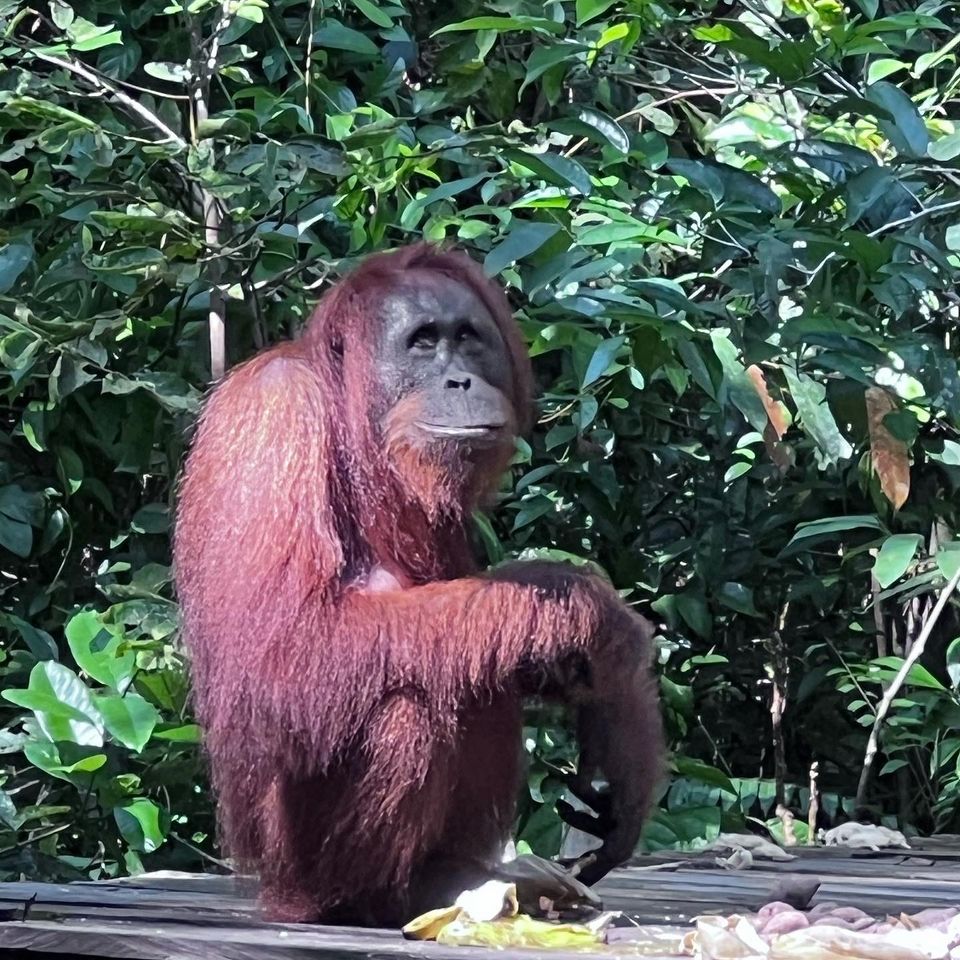
Scattered along the north coast of Bali are a couple of small towns playing host to intrepid wanderers eager to venture outside the tourist vortex further south as well as passing cruising boats keen for a rest before or after they attempt the mighty Lombok strait.
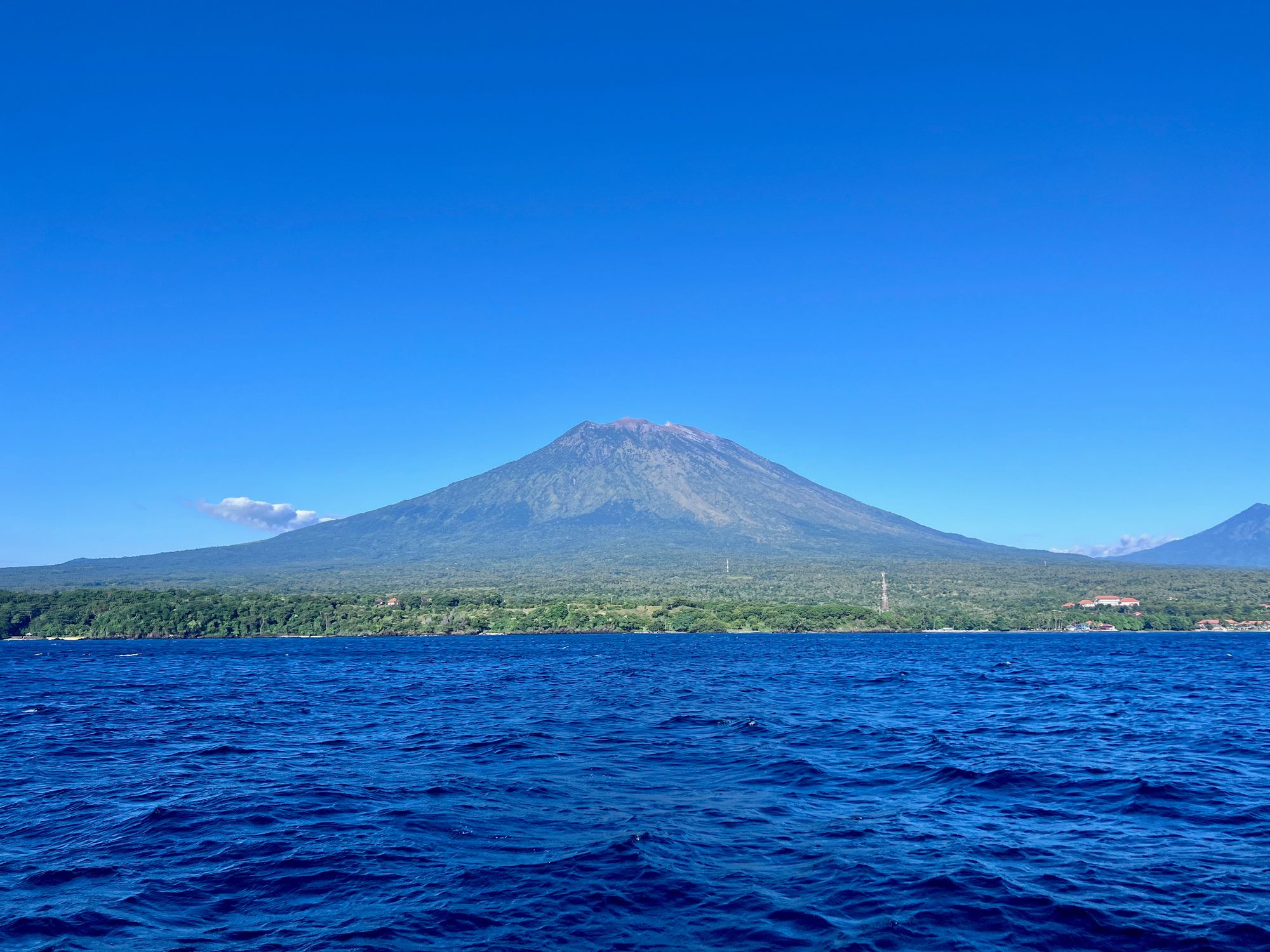
When Ausbos drops anchor in Lovina after a harrowing day of beating against the current, business must be slow. Seemingly every shop owner in town descends upon us as we land on the beach, everyone flogging exactly the same trinkets. Eager hawkers lurk at every corner, patiently waiting for their turn to sell.
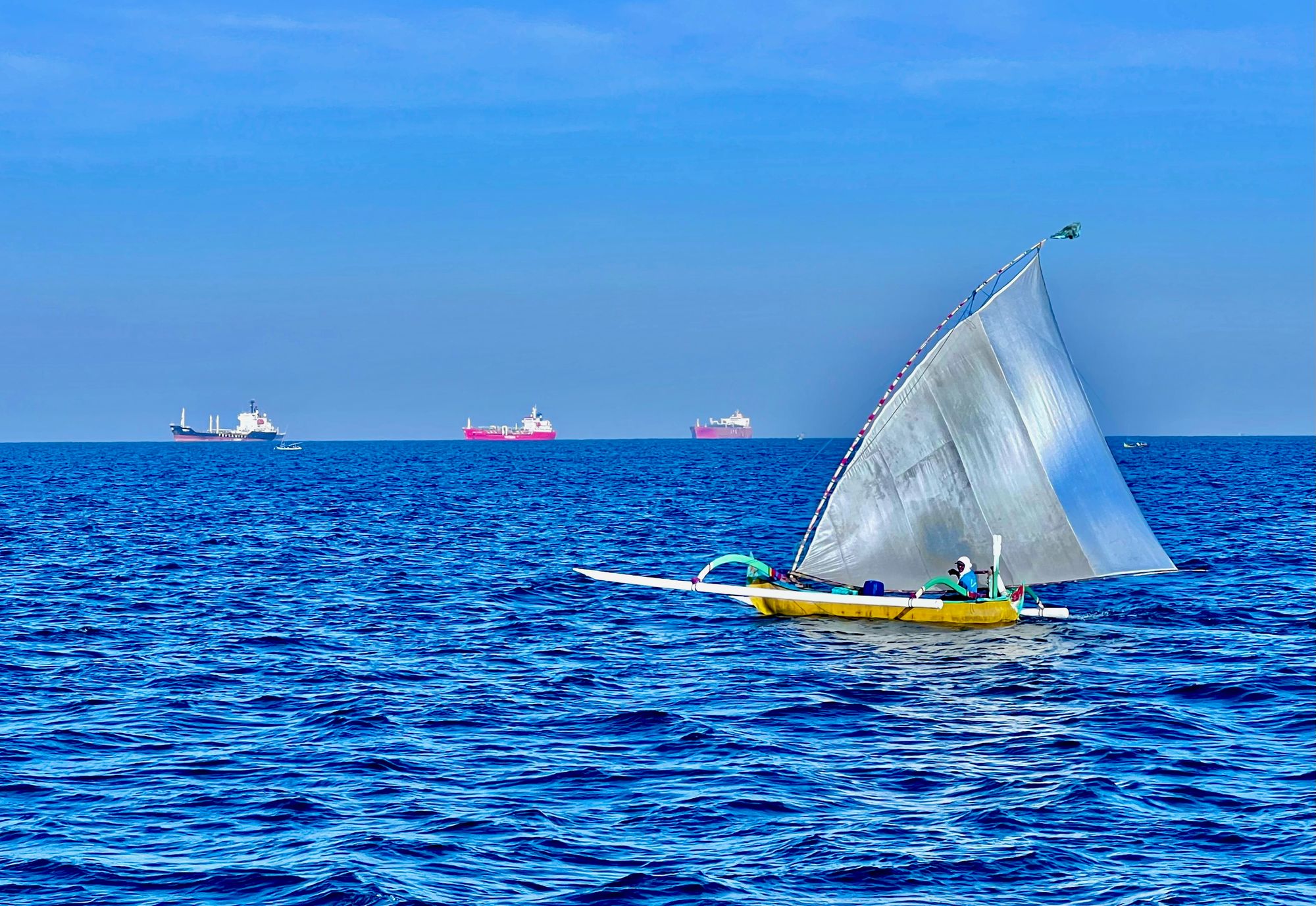
In places like this lessons are learnt very quickly, after the first few hours we avoid them with gusto. Even so, we leave with jewellery and clothes we didn't know we needed. I also score a bag of giant passion fruit from a friendly but pushy lady who plants herself next to me on the sand as we tuck into lunch. The negotiations are friendly and full of smiles; we leave with the most scrumptious passionfruit I've ever tasted so not all is bad.
Although the town itself stretches well inland, our exploring is of the bare foot variety and we stick to the beach where restaurants and bars sit invitingly.
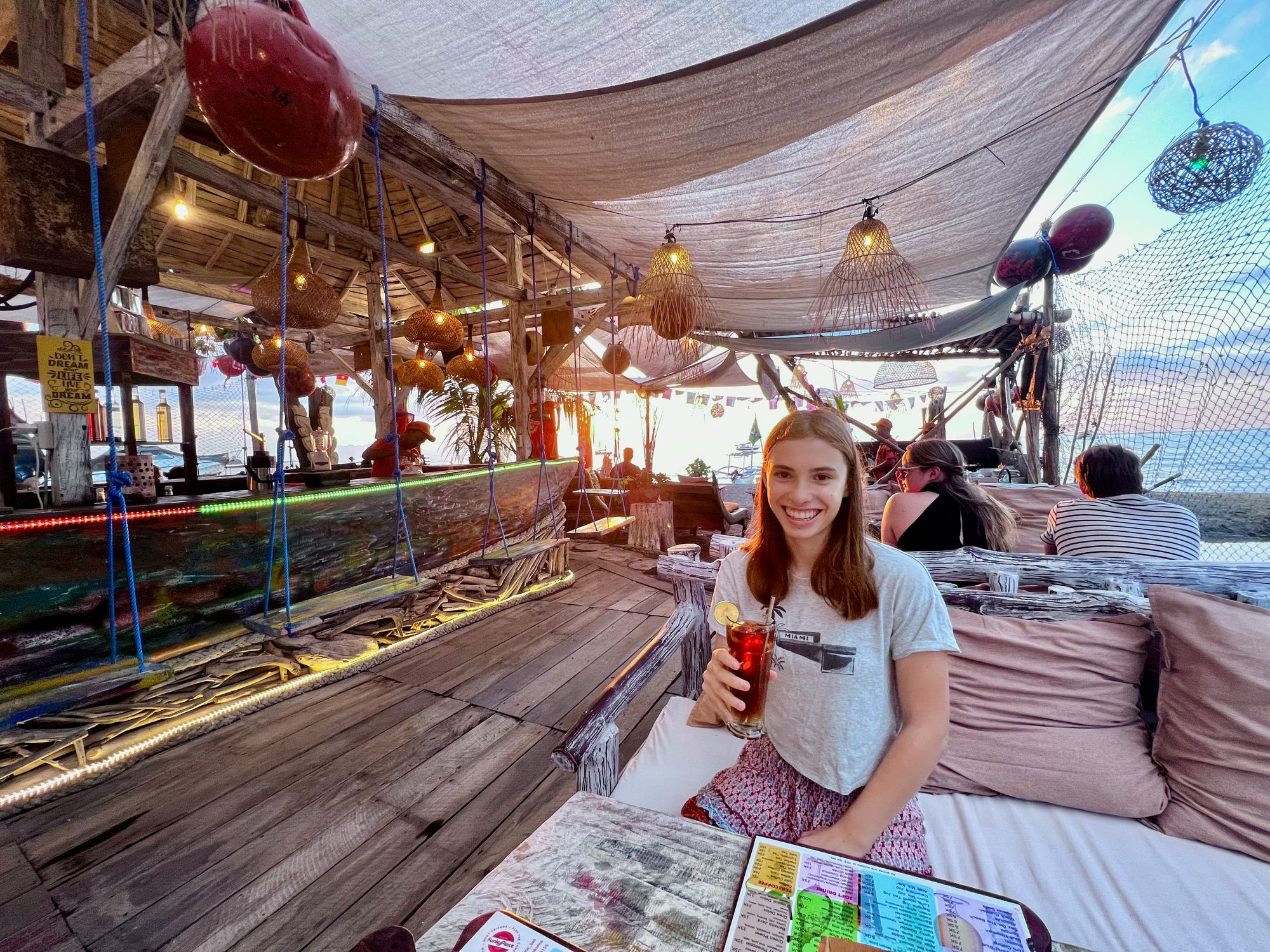
A groovy beach bar with tasty food, cheap drinks and great music serves as the perfect sunset spot every night, adding a relaxing evening ritual to our Lovina beach schedule.
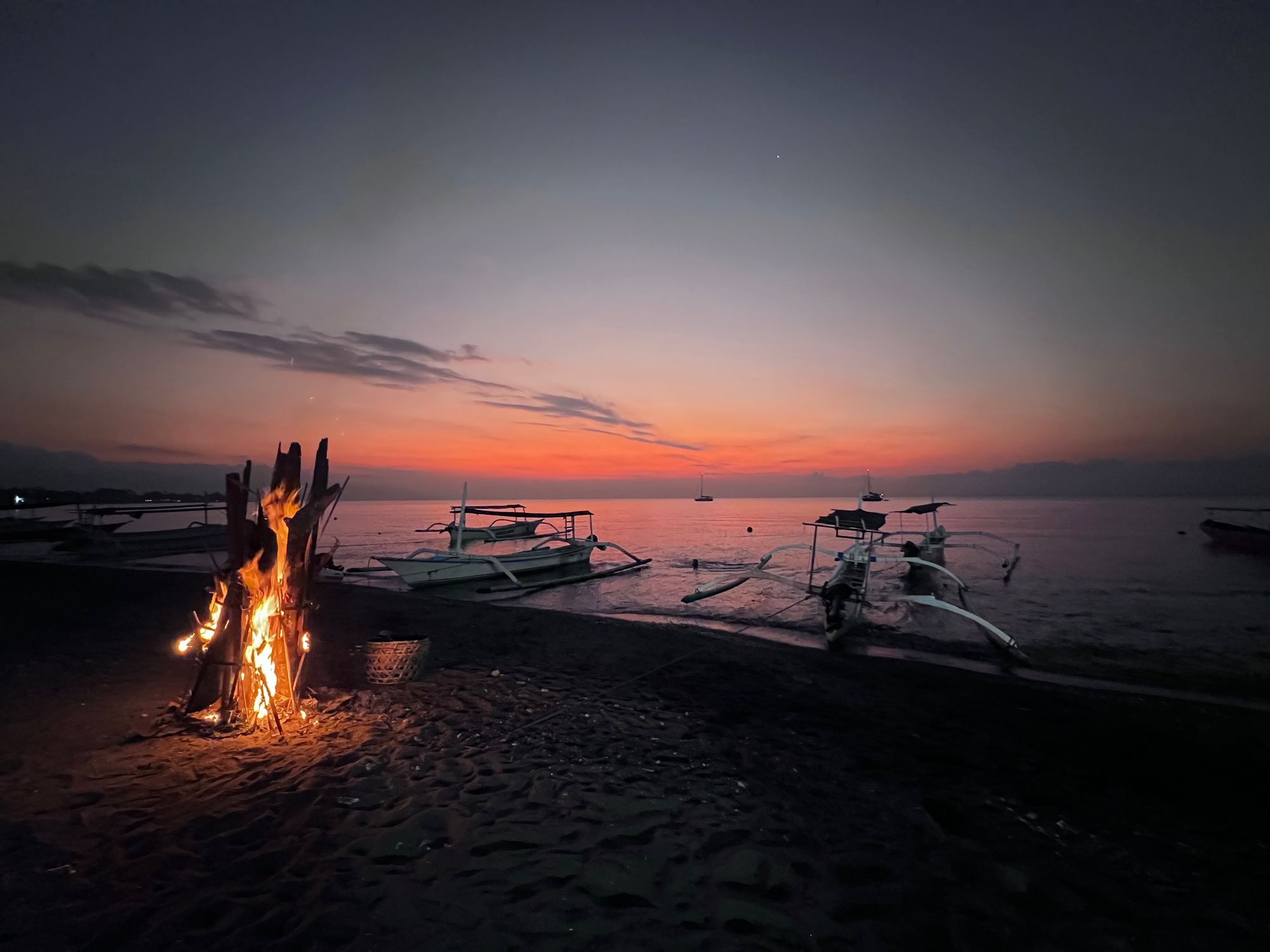
Under normal circumstances, the cheap food and drinks would be enough to keep us here for at least a week despite the persistent hawkers. However our friends on Wild One are in the next bay along so after a few days we join them in a serene spot right on the edge of the North West Bali National Park.

Here we find a large bay with a single resort perched on the headland and a few sailing boats anchored in one corner. The place feels expansive and serene with a narrow but long and shady beach on one side and bush as far as the eye can see on the other. The kids hit the water immediately with their bestie Maya from Wild One while Graham and I yack away with the adults - so lovely to be with good friends again.

Cruising friendships are usually formed fast, when you sail together in remote places, other boats are often your only source of support in times of trouble, as well as the only option for socialising. We meet a lot of cruisers along the way and love travelling in company where itineraries allow it. The crew from Wild One have been our on-and-off cruising companions since 2020 and are firm favourites. Cruisers who get through covid years together, stay together. Feel free to quote me on that one.
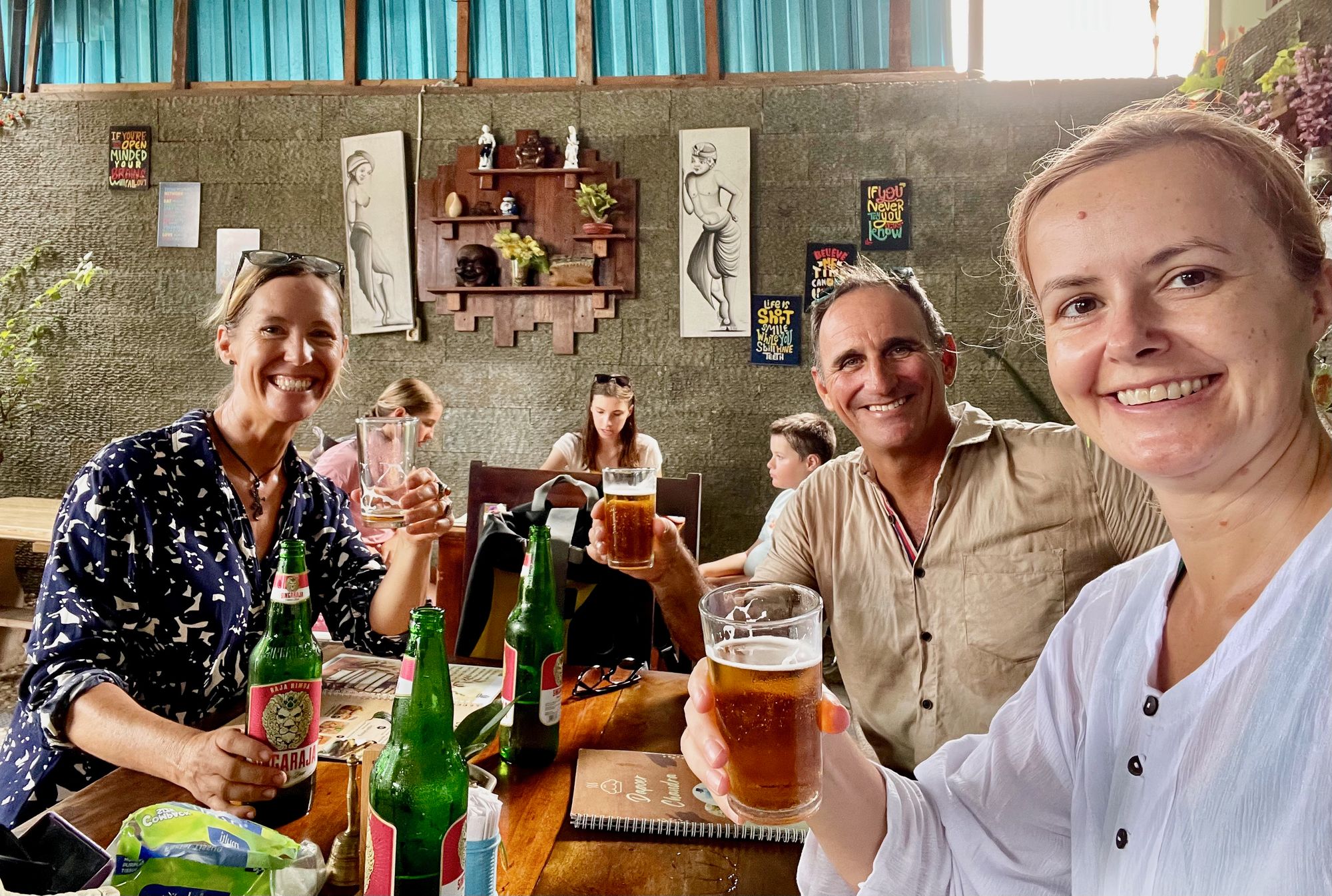
On the very next morning after arrival, the kids rush back from the beach with a bizarre story of hooded prisoners and a pending release of large turtles. What? A quick slap of sunscreen later and we're on the beach with what seems like close to a hundred Indonesians in various shades of official uniform plus a few curious onlookers like us.
A release ceremony of sorts is under way, with eighteen giant green turtles lined up in two rows along the beach, bodies bound in large cloth with only their head sticking out.

It emerges later they were rescued from a well organised and powerful poaching gang operating from the local village. The man running the whole operation in plain sight of the authorities for years, has finally been arrested. Along with an accomplice, he is paraded in front of the gathering, hooded and bound for maximum effect.
This is what the kids witness moments earlier and it certainly makes for interesting dinner conversation that evening. Now we can tick off "how to disrupt marine animal smuggling operations" from our homeschool curriculum.
The parading and ceremony are important as we later discover, they ensure buy-in from local law enforcement and minimise chances of corruption during the upcoming trial. As rangers pour buckets of water over the turtles, various officials make speech after speech.
Finally, and not a moment too soon, one by one the creatures are slowly uncovered and nudged to get moving. It feels a little bit chaotic with so many people surrounding the turtles on three sides and some even getting in front of them for photos as they start moving.
A few of the turtles don't need much encouragement as they waddle towards the water and its silent but clearly powerful pull. As they take their first paddle in the turquoise shallows, a feeling of relief floods me. Off they go, swimming towards the bay exit. How can they be so sure of the direction being so far from familiar territory?
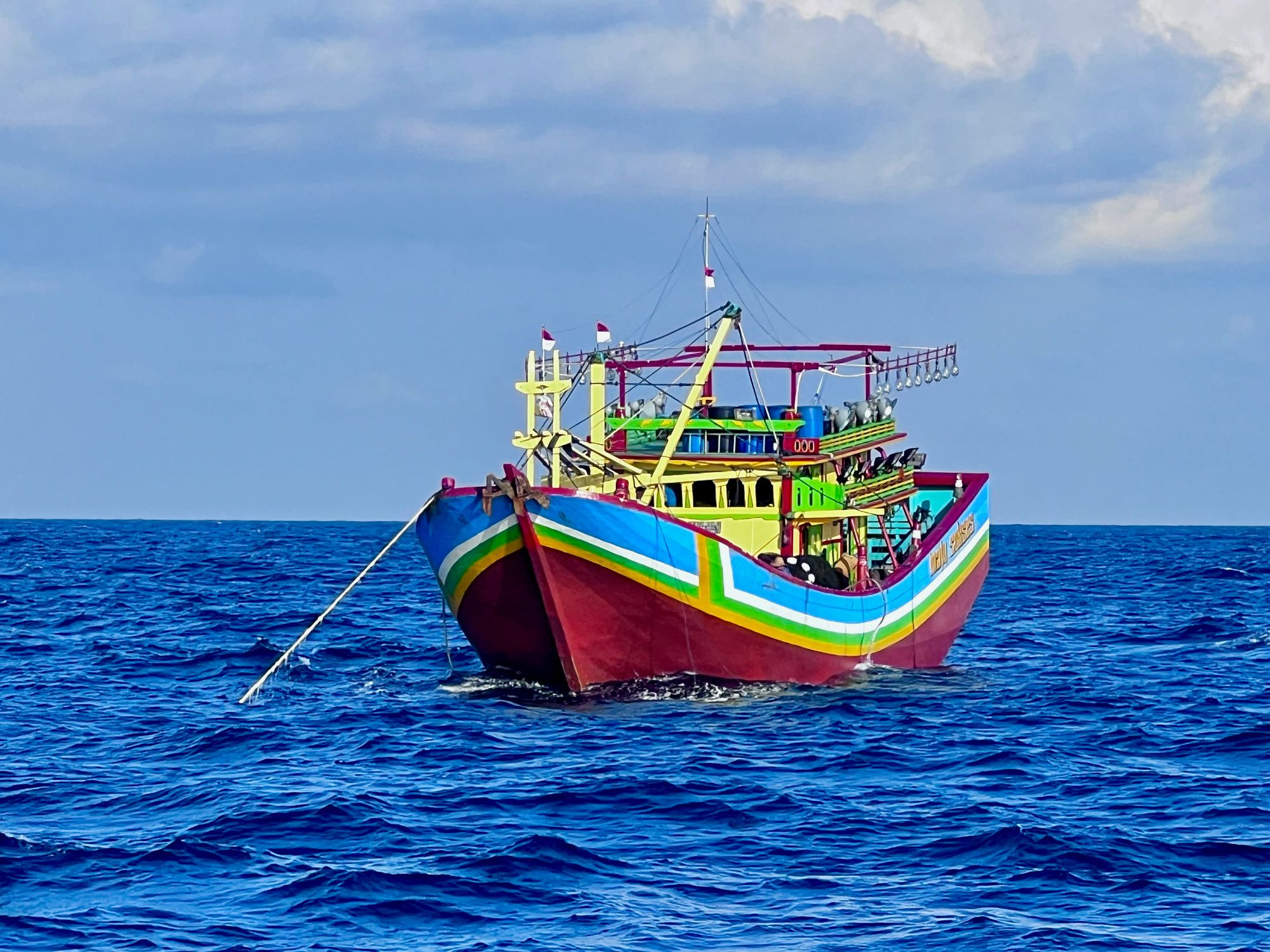
A few turtles hesitate and struggle to get a move on after the bandage is cut. Are they feeling dizzy, tired, confused by the mayhem or all of the above? As one gentle giant sits still on the sand, a uniformed man jumps on its back in what seems to be an attempt at a hug.
We're all horrified but stand by uncomfortably, saying nothing while he grins. It's too much for Jake to bear as he suddenly whips forward and tearfully yells at the man to get off the turtle!. This grabs the attention of a woman I noticed directing proceedings earlier, mainly by trying to keep people away from the turtles. As she quickly gets the turtle hugger to get off the poor animal, Jake is visibly upset. As we hug and console him, a feeling of pride overwhelms me; he spoke up when all the adults just watched on.
The next day, the same woman stops by to invite us to the turtle and dolphin sanctuary she runs a few hundred meters away from where we're anchored. Her name is Femke, after seeing Jake speak up for the turtles, she is eager to explain about their work here and what yesterday was all about. The sanctuary is ordinarily not open to visitors so we're very lucky to be invited.
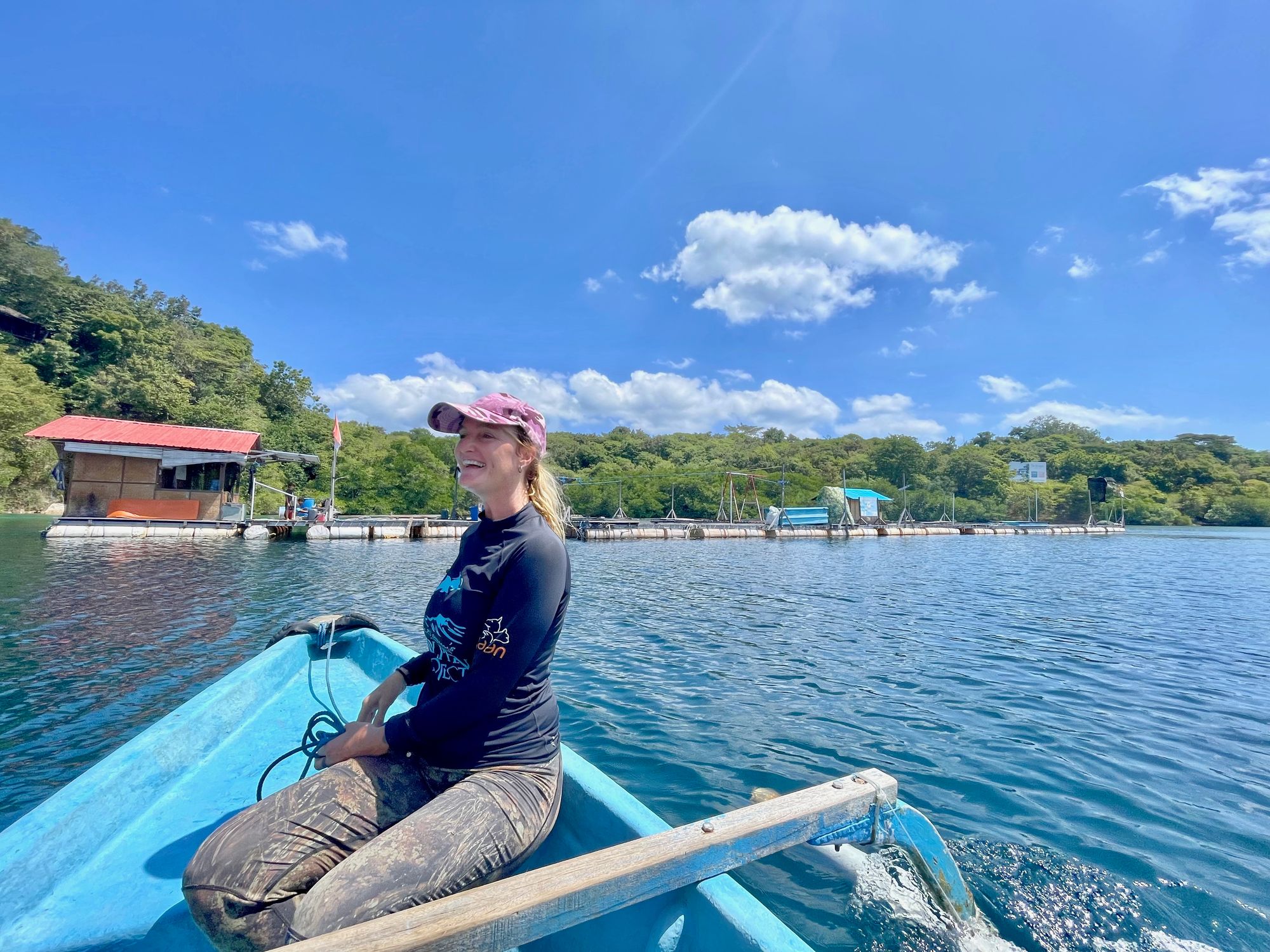
We immediately jump into her longboat and head over to the Dolphin Project sanctuary, where there are currently two turtles in rehab, as well as Rambo, a rescue dolphin still working on moving back to the wild.
Femke gives us the low down on turtle and dolphin rehabilitation basics, her stories of navigating the complex cultural, economic and political obstacles for over 20 years to save these animals giving new meaning to grit and perseverance.
Two large pens were initially built here to house six dolphins rescued from a chlorinated hotel pool in Bali (yes, hotel). We hear about dolphins blinded by the chlorine, losing their teeth and their sanity just so some passing hotel guest can get their Insta shot. Three were released back into the wild (one after having false teeth implanted!) while the rest sadly died. Rambo still hangs around the bay but the team is hoping he will join a wild pod when he is ready and go on his merry way. For now, he swims up to welcome visiting yachts and occasionally returns to the pen to sleep. People are firmly encouraged not to interact with him by Femke's team, who keep a very close eye on him. Dolphin Project are now working to rescue another 11 dolphins from yet another entertainment park in Bali.
Hearing Femke talk about her team's work in Indonesia is captivating. In addition to the Dolphin project, she also runs the Jakarta Animal Aid Network (JAAN) https://www.jakartaanimalaid.com, which she founded in 2008 to improve the welfare of both domestic and wild animals in Indonesia. Working to interrupt the illegal poaching and smuggling of exotic animals, they base themselves in Sumatra right next to one of the main animal smuggling ports. Domestic animals are not forgotten either, with horses, dogs and many others rescued from some fairly terrifying circumstances. While we're in Bali, a family in the local village gives up their pet macaque monkey after one visit from Femke. Usually, just showing them the massive scar on her finger from a monkey bite is enough to convince.
The rescued Balinese monkey and all other rescues travel to JAAN's animal sanctuary in Sumatra where rehabilitation takes place. Animals that cannot be returned to the wild live out their lives peacefully at the sanctuary. Femke answers our buzzing questions with insight; her love for the animals and perseverance in the face of crazy obstacles beyond inspiring.
The next day, kids are invited to join a turtle feeding session early in the morning for the two sick turtles currently in residence. I am told that Coco, a green turtle with cuts to her head from a propeller and an injured mouth, is fed a minced up mix of seaweed and fish through a tube to sustain her while her cuts heal. Her hospital mate, an Olive Ridley turtle with a lung infection and buoyancy issues, prefers to chew his squid straight up. What a privilege to see and experience all this before we leave Bali.
Next on the itinerary is the island of Borneo where we are to meet our friends from Australia, Emma and Dave who join us for jungle fun with orangutans and other creatures.
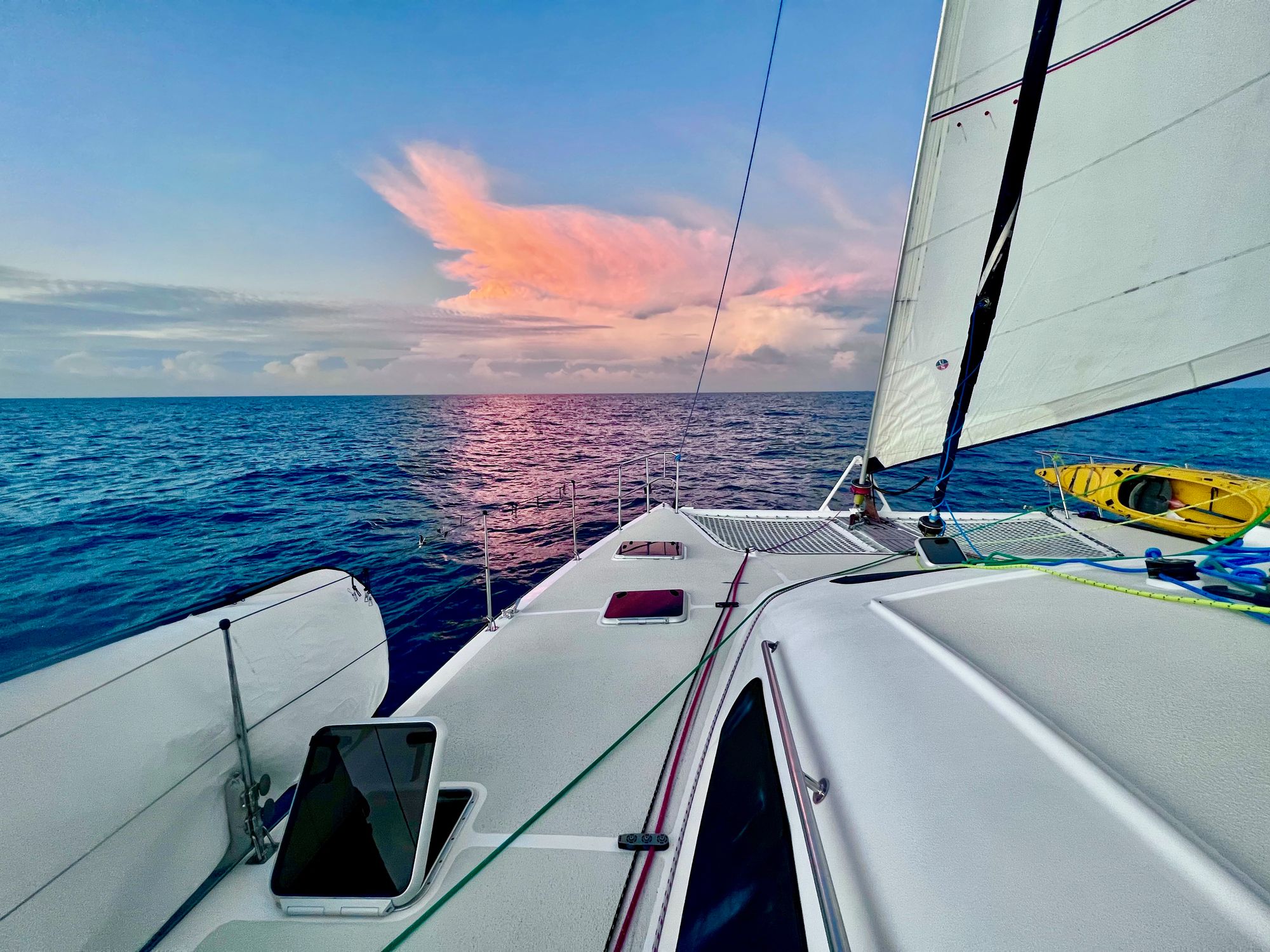
The orangutans live in the Tanjung Puting National Park located just outside of Kumai, on the southern side of the island of Borneo in an area that Indonesians call Kalimantan. It takes us about a week to get there but the wind is finally behind us, making for some fast and smooth sailing.

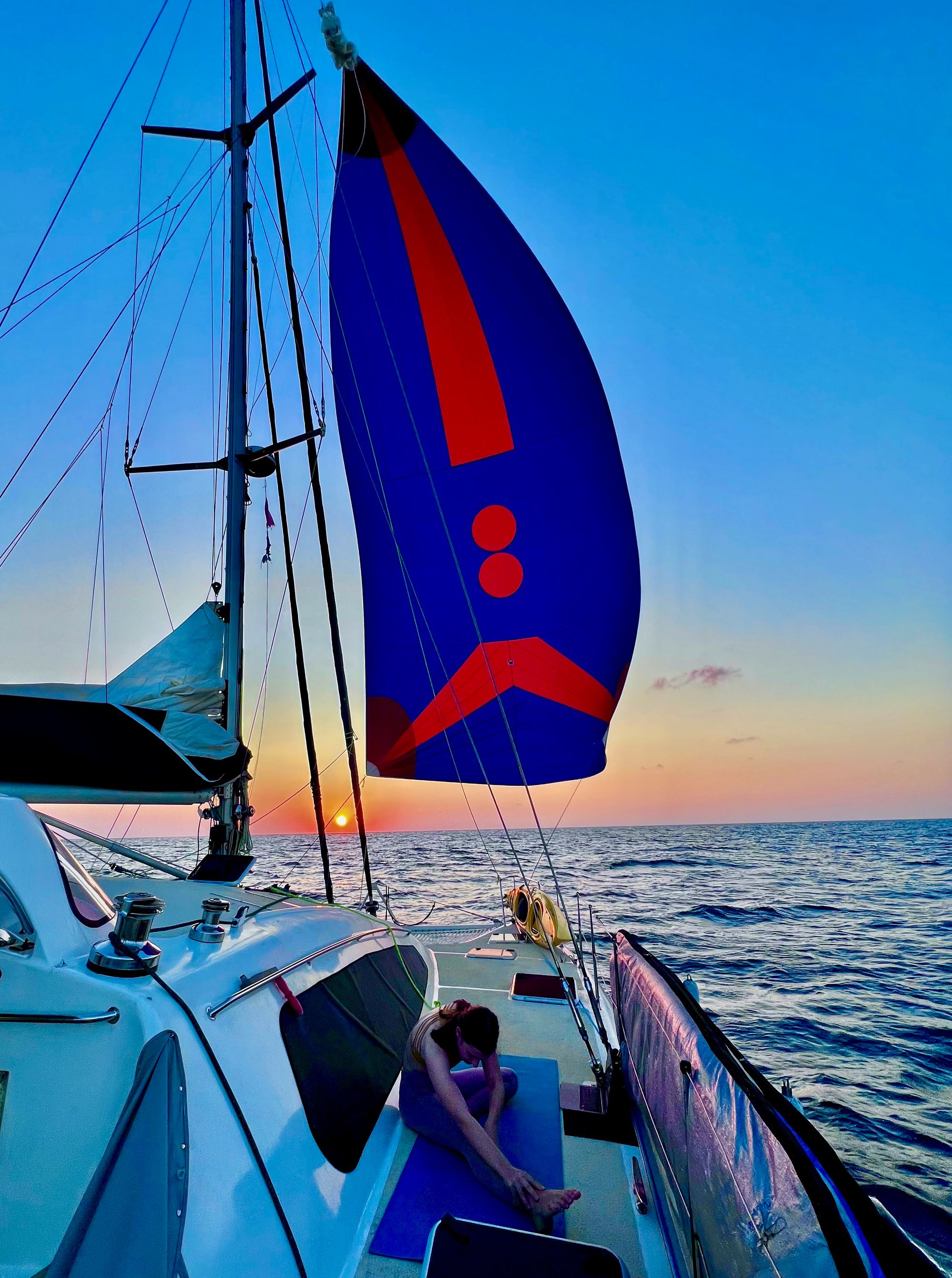
Kumai is an outpost kind of town with a slow river acting as natural barrier between town and mangrove spreading out towards the jungle on the other side. The sound of chirping birds dominates the landscape giving the otherwise bleak looking town quite an upbeat feel. It's not long before we find out that the sound actually comes from multi-story concrete looking buildings littered along the river shore. These are bird-nest farms, for the very small and very endangered swiftlet.
The swiftlet normally lives in dark caves and, similar to bats, uses echolocation to move around. Instead of twigs and straw, however, the swiftlet makes its nest from strands of its own gummy saliva, which then hardens when exposed to air. The bird nest soup is a delicacy in China, rumoured to possess revitalising properties and it fuels an entire industry in South East Asia. Not surprisingly given that 1kg can cost over $2000 in China.
It turns out that the swiftlets are neither bred nor captured to make the nest. Rather, wild birds are attracted by high-frequency bird calls emitted by dozens of small speakers set on the grey buildings. The deal seems to be that the birds go out and forage for food in the bush during the day then return to the nests overnight, entering through tiny, window-like holes.
Hundreds of birds fly over our boat back and forth between town and bush to the beat of the speakers. Whether they are allowed to nurse their young before the nest is taken away is anyone's guess. Indonesia is the biggest producer of bird nests in the world and Borneo seems to be the epicentre of the production. We hear about local villagers building on top of their houses to attract the swiftlet. If done sustainably, this cottage industry seems like a good way for local people to make some money as swiftlets abandon their nest after breeding.
However, it's hard to imagine the large factory farms in town benefiting anyone but the few (almost certainly Chinese) owners. Perhaps dwindling numbers will eventually persuade them otherwise. I hope so for the swiftlet's sake.
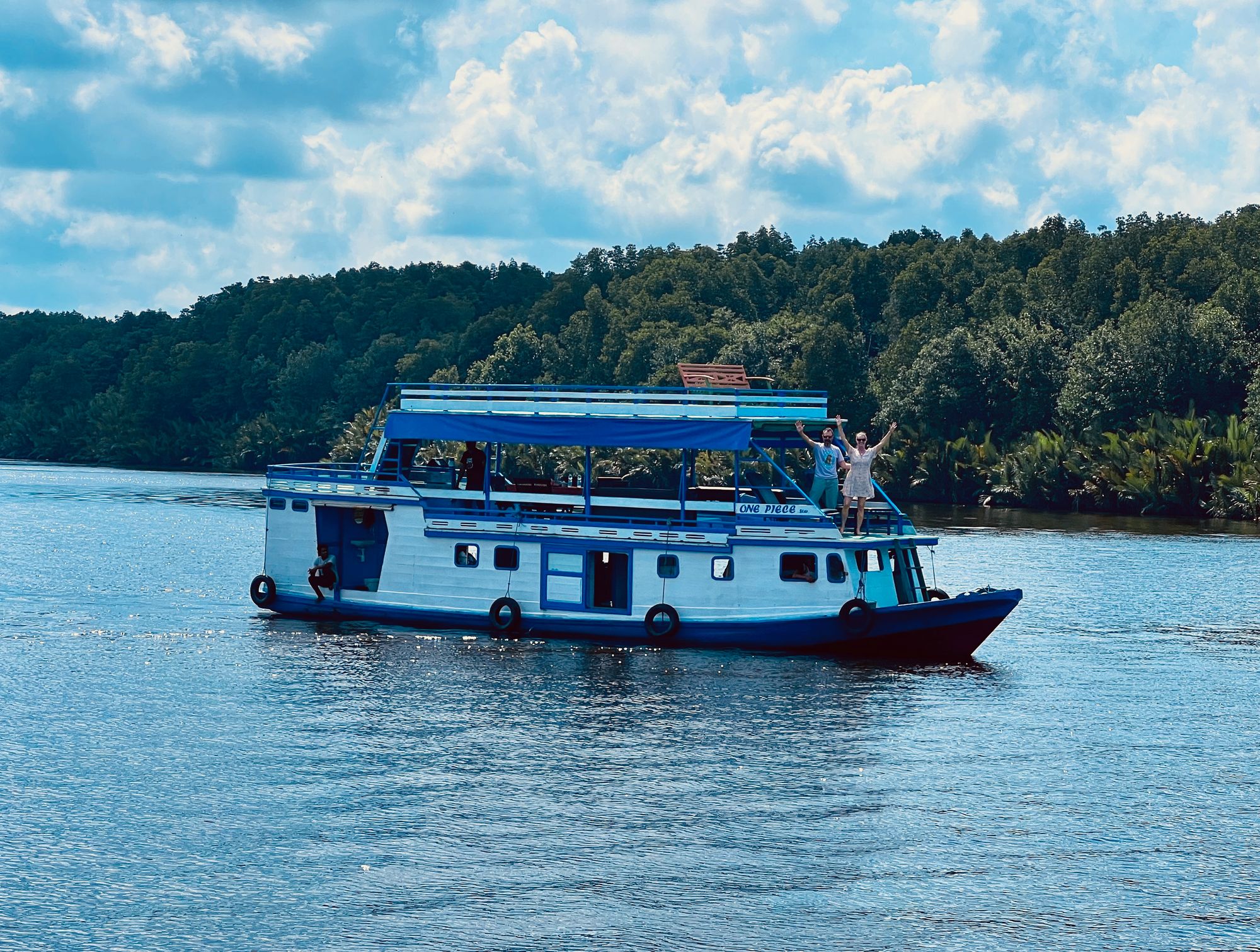
Emma and Dave fly in early the next day and wave to us from the riverboat which will be our home for the next three days. The plan is to slowly make our way through the Tanjung Puting National Park where several wildlife reserves are home to both wild and rehabilitated, wild born ex-captive orangutans. We are beyond excited to be in this special place, and especially to share the experience with good friends from home.
Our boat is a traditional Indonesian river boat called klotok, made entirely of wood. Staff quarters including small kitchen and toilet are below deck, while the covered but open deck serves as our living and sleeping quarters. There is also an open viewing deck above which proves priceless once the monkeys start calling from the tall, jungle trees. We meet the captain, cook and guide as the boat meanders up the narrow river. As we slowly leave Kumai behind, Emma pulls out huge bars of Toblerone and bottles of fancy vodka. Just when we thought this trip couldn't get any better!

The vegetation changes from low scrub to rainforest as we travel further in, with helpful traffic signs posted in random spots overrun with vegetation. Quite funny given the slow speed of the riverboats and lack of any traffic signs in the town proper. The Borneo locals clearly take their river navigation seriously.

Troupes of proboscis (long-nosed) monkeys and long tailed macaques make themselves known from the trees. The macaques are mostly quiet while the proboscis make as much noise as possible as they go about their business. We're all surprised to see so many of them close up and to say they behave differently to the their captive cousins we met in Lombok zoo is really understating it.
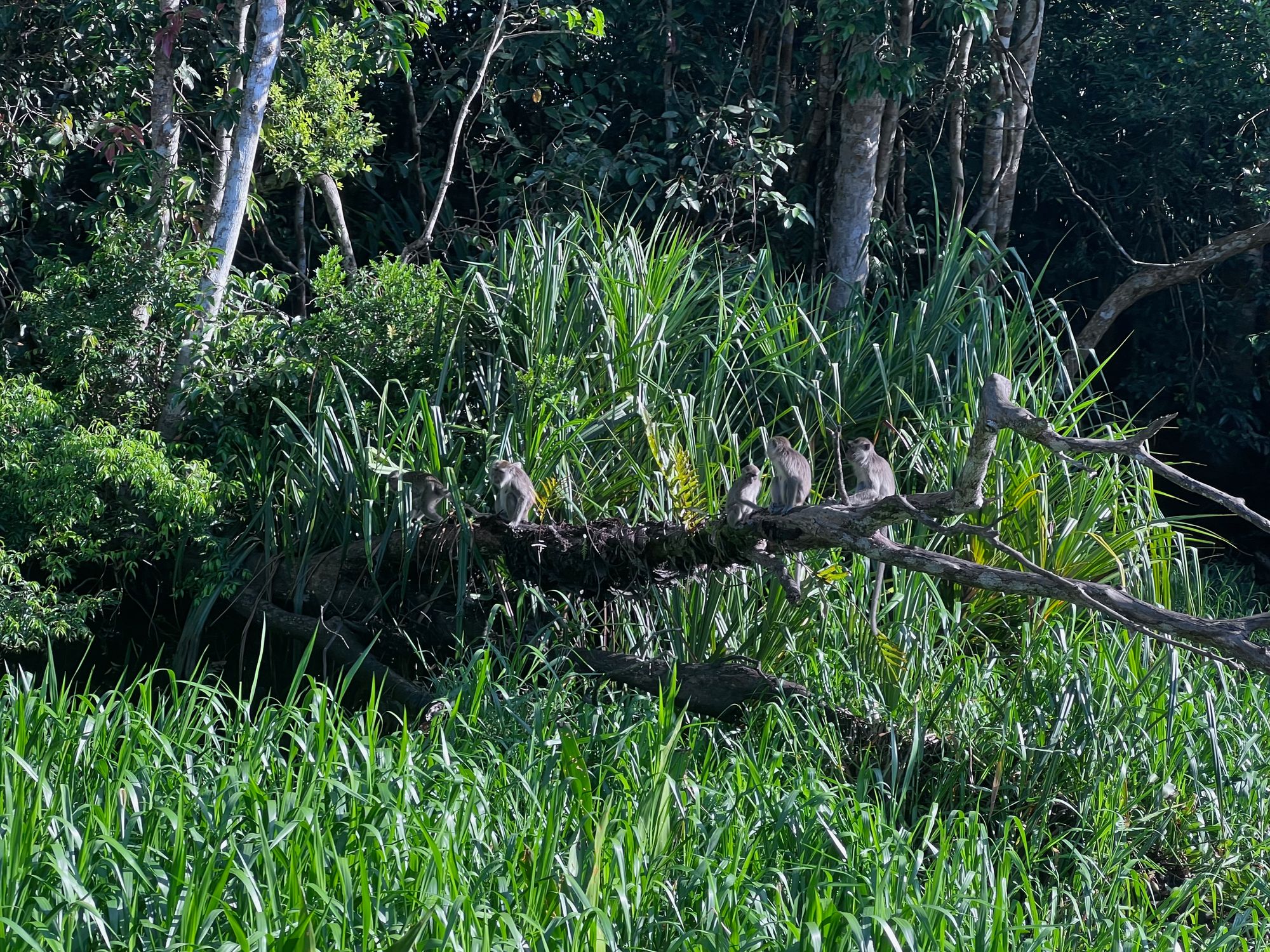
The guide tells us that each group is territorial, and because the river meanders all through the jungle, a swim to the other bank is sometimes a must on their daily forage for food. We stop to observe one troupe mid-cross, with one half already over and yelling at the lone female left on the other bank to hurry up. Crocodiles also live in the river so her hesitation is understandable, this is not a recreational swim.
We catch one proboscis couple mid copulation, monkey style in the tree, with a bunch of excited juveniles jumping and screetching all around the enamoured pair. It's quite a spectacle and clearly a family affair.
We also spot or rather hear a couple of wild orangutans in the low bush which grows along the river bank, with only the heavy sound of breaking branches confirming their presence.
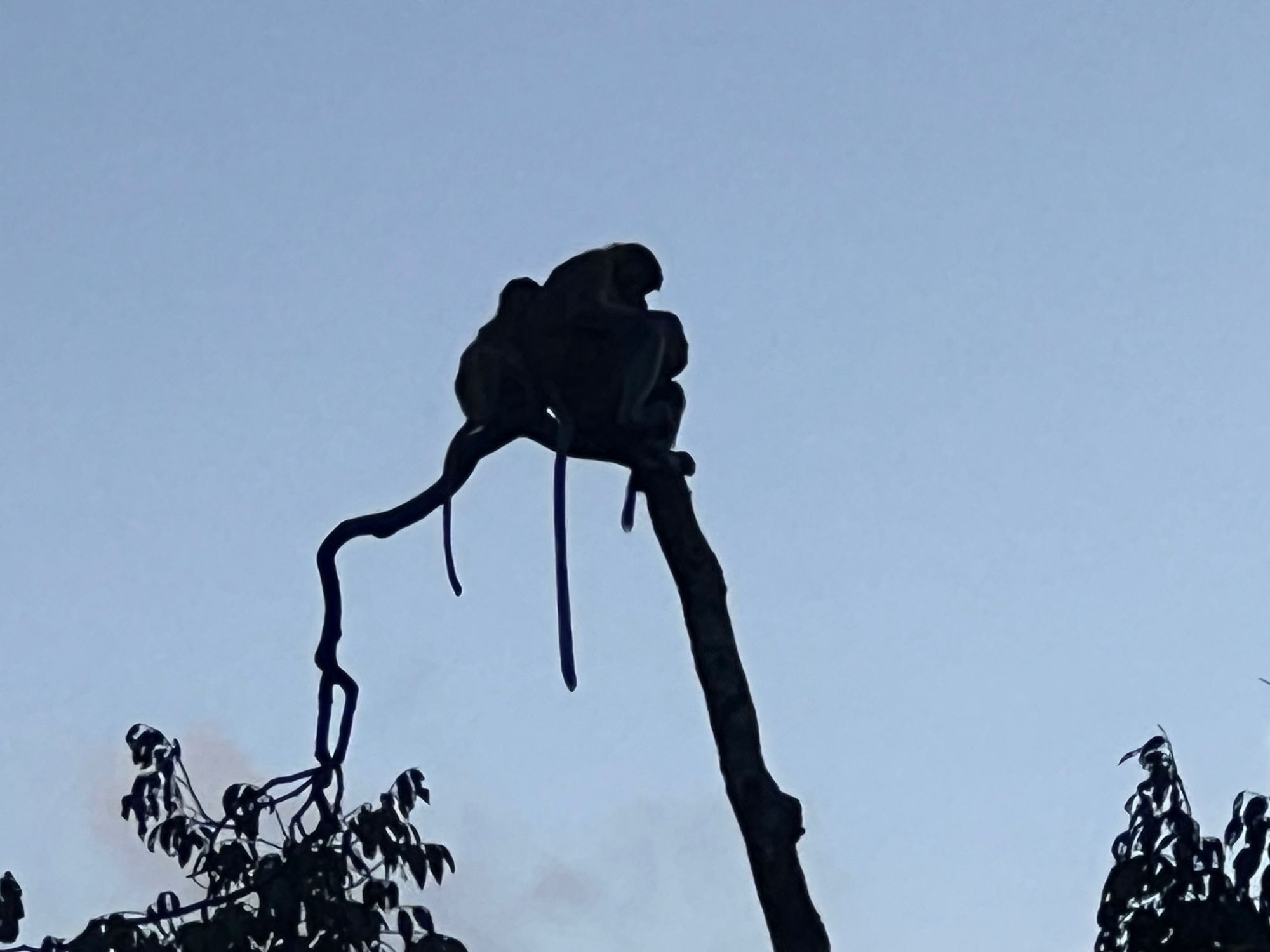
Our tour includes a visit to three feeding stations where wild born ex-captive orangutans are fed at a set time each day. On the menu are bananas, sweet potatoes and corn with bananas a firm favourite.
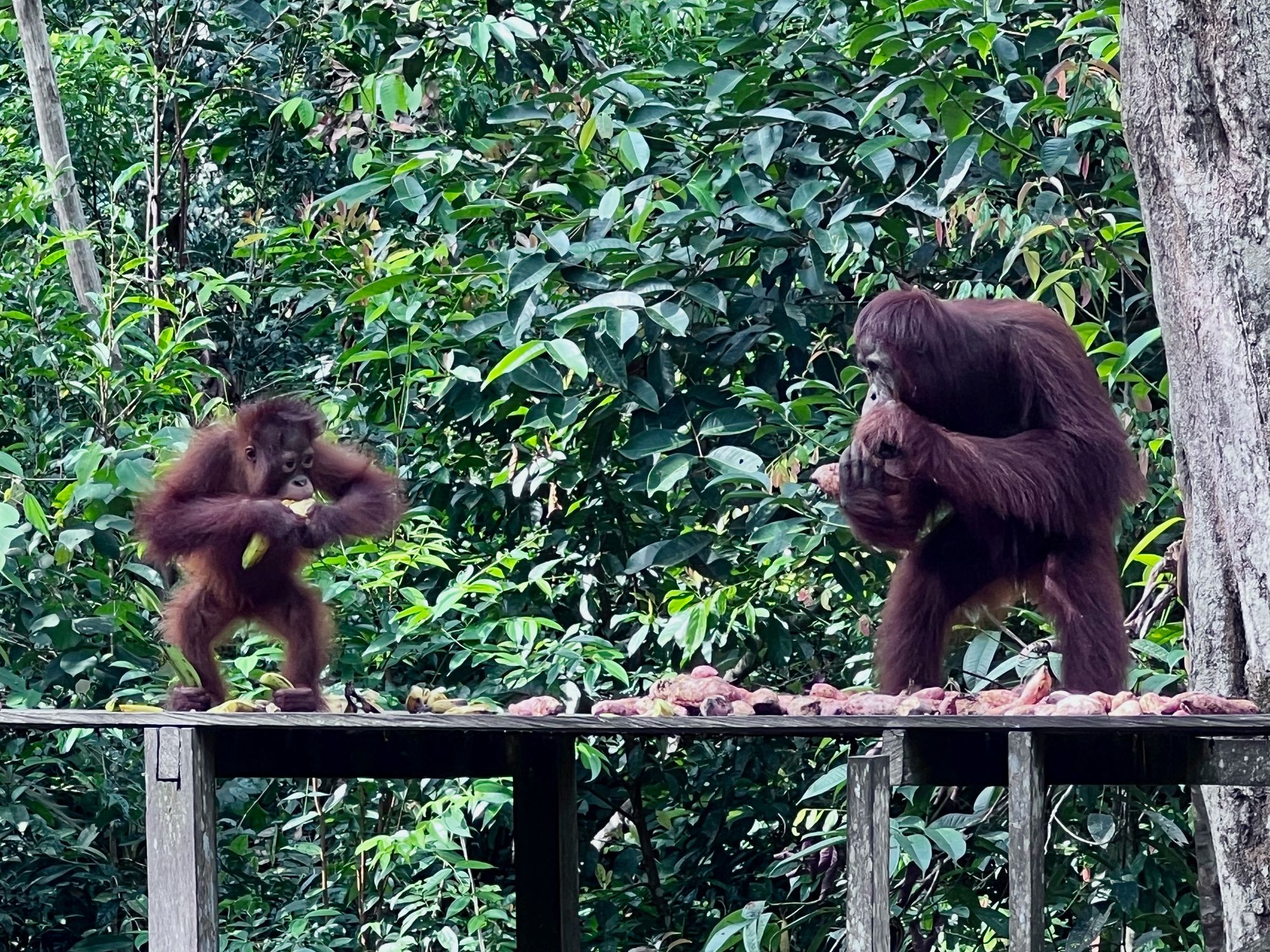
The rangers empty the sacks onto the raised wooden platform where the dominant male takes the pride of place first. He methodically picks the choice cuts from the heap while females and young orangutans slowly emerge from the trees. One by one, they climb the platform, stuff their mouth and hands with whatever they can carry, then retreat into the bush to eat, all the while keeping one eye on the male.
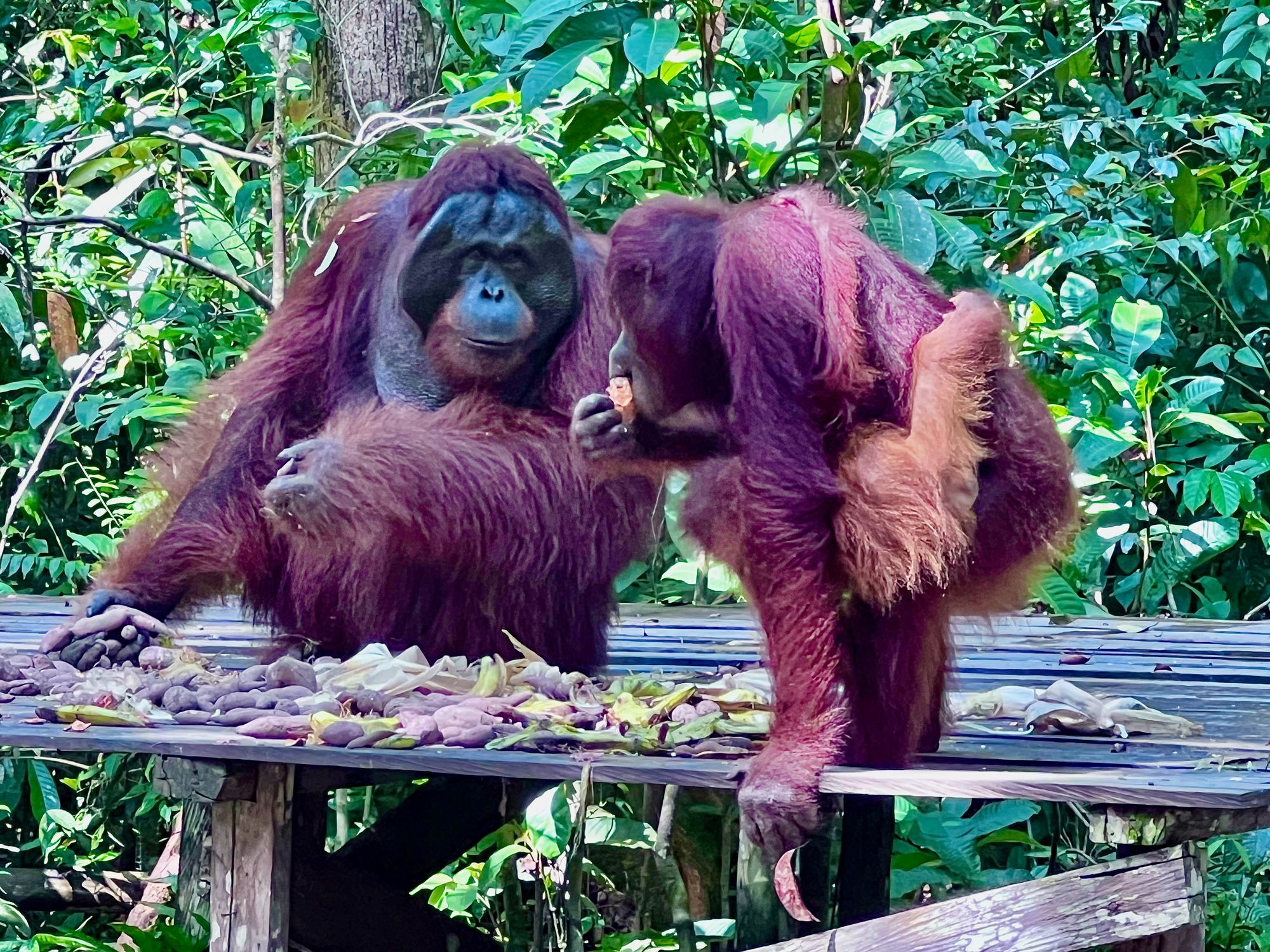
If you are wondering how many sweet potatoes an orangutan can carry, the answer is many, at least five or six fit in the mouth alone.
Nothing breaks the peace, and as far as I can tell, orangutans seem like a pretty friendly bunch. Being solitary animals, only mothers and babies stay together until the young one is about seven. This also means that they only reproduce every seven years at best, making population numbers very vulnerable. Most intriguing is that they all peel the sweet potato with their teeth before eating, but that could just be me.
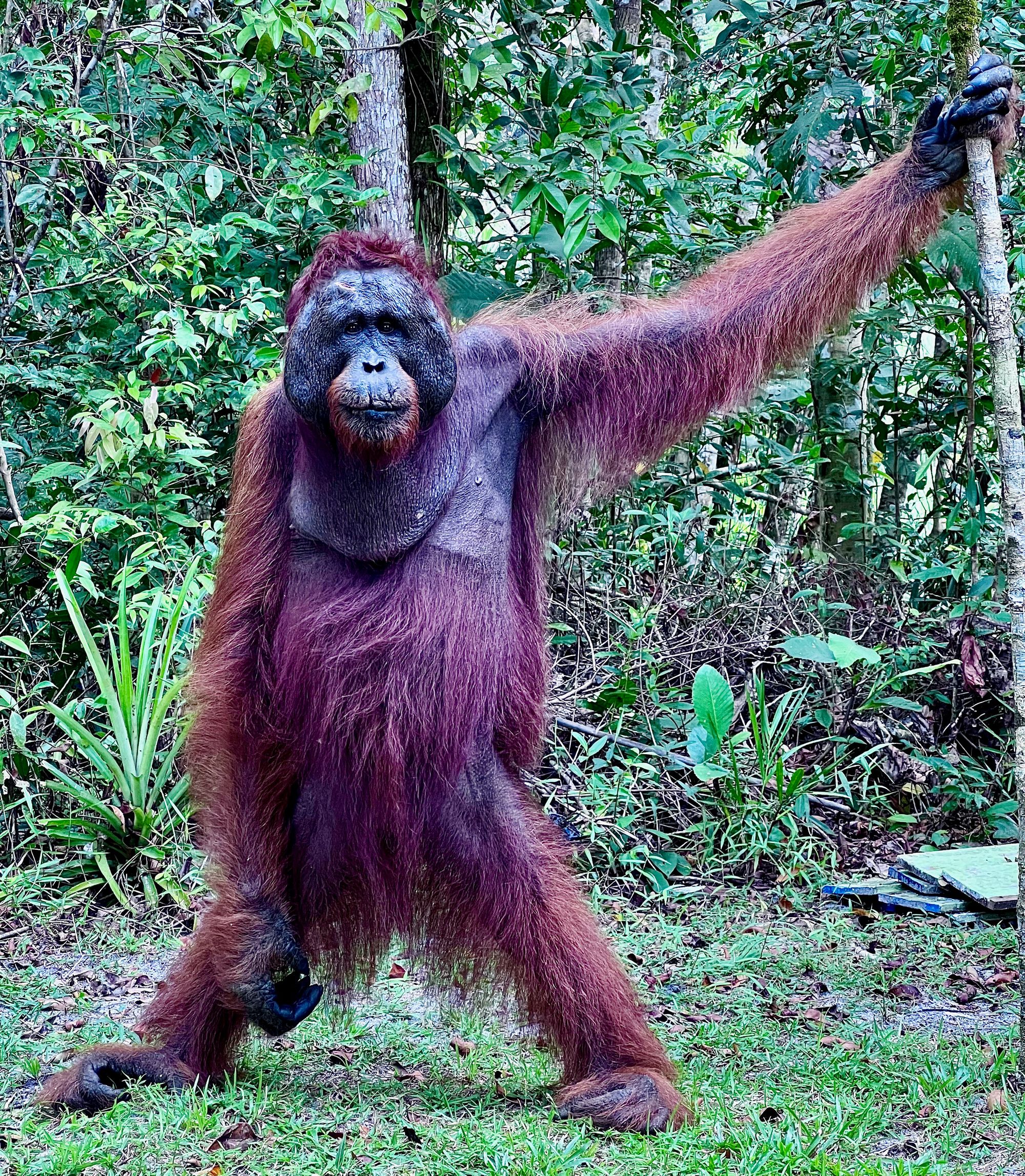
The proximity and the quiet, peaceful presence of these animals has a surreal effect. We know we're here, actually in the forest with them, but simultaneously it also feels like this couldn't be. It's simply beyond the power of words to portray the awe they inspire, especially given the precarious nature of their survival.
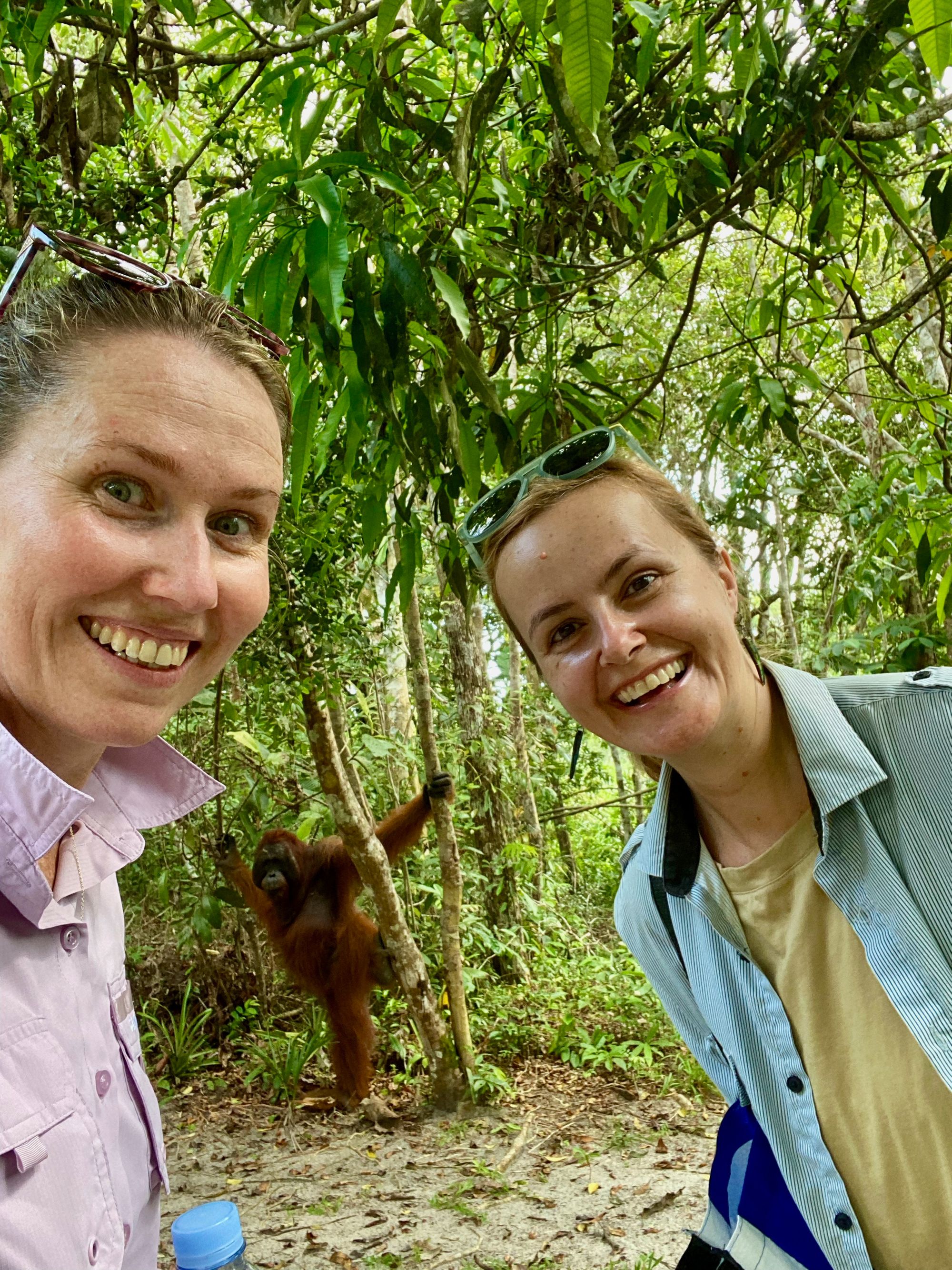
Rainforest in Borneo is being chopped down at an alarming rate, you don't need statistics, just Google Maps satellite to understand the extent of deforestation.
Tourism is the only hope for keeping at least some of these wild places wild; boat crew, guides and cooks all come from the surrounding communities. If locals can't earn their livelihoods through tourism, they will get it from the forest, the timber it produces as well as the oil palm tree plantations that come after.

Dynamite explosions from a nearby gold mine also remind us that the mining industry is never too far away, the polluting discharge from the mine visible to the naked eye in some parts of the river.
One morning, we walk through an area where all the trees were chopped down during covid. Trees have now been replanted but the message is clear. The forest will survive if the surrounding communities are supported and eco tourism nurtured to grow sustainably. And only if the extractive industry vampires are kept at bay.

Despite all this, our three days in the forest is magical. Nothing compares to seeing animals in the wild and I sincerely hope that humanity wakes up in time to preserve these wild places before it's too late.
If you want to help Borneo stay wild, you can donate to Orangutan Foundation International (OFI), a not-for-profit with over 50 years of conservation and research work in Borneo and the longest continuous study of any wild orangutan population in the history of science (https://orangutan.org).